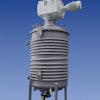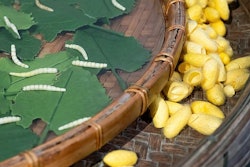
An informal poll on Petfood Industry asked about tree-planting efforts by pet food industry companies. One pet food company shared their story of how they fund the planting of thousands of trees, benefiting local communities and wildlife. Thirteen poll participants affirmed that their company had either directly planted trees or funded efforts to do so, out of 24 respondents and more than 400 people who viewed the blog with the poll.
“Through our UPCs for Trees program, customers send in the UPC from any Earthborn Holistic, Venture, or Unrefined product,” Brandi Kramer, marketing coordinator for Midwestern Pet Foods, said. “In return, Midwestern Pet Foods plants trees to help the environment. To date, we’ve planted over 900,000 trees in countries like Kenya, Senegal and Uganda with our partner, Trees for the Futures.”
“Trees for the Future aids environmental conservation organizations to help local farmers plant forest gardens on their land to keep them out of protected habitats and ecological areas,” she said. “These gardens are being used to protect biodiverse locations for chimpanzee and giant snail habitats. The goal is to have forest gardens around the world in most ecological preserves… By planting trees and creating forest gardens, we are helping to fight hunger and poverty. Over 228 forest gardens have been planted and over 1,822 people are on the pathway out of hunger and poverty. Midwestern Pet Foods’ goal is to have planted one million trees by Earth Day 2022.”
Forest gardens are a form of agroecology, which incorporates both farming and environmental factors in land use practices. Agroecology allows farmers to cultivate the land, while providing habitats for wildlife. This allows farmers to ensure long-term productivity of their land while benefiting from various ecosystem services, like pollination. For example, some shade-grown coffee is produced beneath a canopy of various native or economically useful trees, a technique known as agroforestry. The trees provide the farmer with resources like fruit, nuts and firewood. Although short-term profitability may be lower in agroecology systems compared to intensive cultivation of single crops, over time agroecological farms prove more resilient to commodity price fluctuations and weather extremes. Agroecology can help small farmers on marginal land, who work with minimal resources, since leguminous trees improve soil fertility while other trees provide livestock forage, which reduces the need for buying agricultural chemicals and feed. Meanwhile, animals and plants colonize the constructed ecosystems, building biodiversity that makes the whole system more stable. The soil too becomes more stable, with tree roots preventing erosion and landslides.
Beyond assisting people and wildlife, supporting tree planting efforts helps a pet food company stand out and define their brand position and ethos in a crowded marketplace.
“Consumers love to see companies with strong sustainability initiatives,” Kramer said. “Creating awareness about our environment is important and really allows for a connection between the consumer and the company. At Midwestern Pet Foods, we not only love your pet, but we love the planet too.”
Benefits of trees to communities and environment
Along with absorbing carbon dioxide, trees provide homes for a wide range of animals, plants and microbes. For people, trees provide fruit, nuts and shade. By shading a pet food facility, trees reduce heating costs in the summer and reduce the strength of winds in winter. As local food trends catch on, there isn’t a much more local food source than an apple or native persimmon tree on a company’s own campus. Trees provide aesthetic benefits and morale boosts. Trees create the opposite of the “broken window effect,” by which a shattered pane can reduce perceptions of security and property value. A meta-analysis published in Ecological Economics reviewed evidence that tree cover improves property values. For pet food industry companies, organizing employees into tree planting brigades builds a sense of comradery and shared purpose beyond profitability. Watching a seeding one has planted grow connects an employee to the facility where they work and encourages a sense of nurturing and belonging to a physical space in a way that simply working there does not.
At the 2021 United Nations Climate Change Conference (COP26) in Glasgow, Scotland, UK, leaders of 100 countries pledged to halt or reverse deforestation by 2030. Greenhouse gas pollution gets much of the attention as a cause of climate change. However, the loss of forests contributes to climate change in numerous ways, from methane-producing termites feeding on scrap wood to increased surface heating, along with the lost intake and storage of carbon by those felled trees.
At COP26, Amazon founder Jeff Bezos said his Bezos Earth Fund would dedicate US$2 billion to restore ecosystems and develop agricultural systems that cause less habitat loss and environmental degradation. As Amazon’s profits go to benefit the Amazon rainforest, pet food companies too may find ways to restore ecosystems, even if they don’t have billions to spend. Shovels and seeds are cheap.
Biodiversity loss and COVID-19 pandemic
By supporting conservation and ecological stewardship, pet food companies could even help prevent the next pandemic. Bats may have been the initial source of the SARS-CoV-2 virus, which causes COVID-19, according to scientists writing in the journal Microbiology Australia, although the disease may have passed through an intermediary animal. Bats can carry coronaviruses, like those which caused the previous SARS and MERS outbreaks.
Ultimately bats aren’t to blame, as biodiversity loss may have created conditions leading to the COVID-19 pandemic, according to scientists writing in Biochemical and Biophysical Research Communications. The researchers argued that the loss of habitat, urban growth and agricultural practices increase the probability of diseases spreading from wildlife to humans. As bats lose their natural homes, they come into closer contact with humans and livestock. Likewise, biological niches harboring pathogens have also been altered, while the viruses themselves have evolved to become more capable of inter-species transmission. This doesn’t mean bats should be persecuted, though, wrote another group of researchers in Biological Conservation. The scientists surveyed people in China following the publication of research that suggested the SARS-CoV-2 coronavirus may have originated in bats. Most survey participants (84%) had misunderstood the connection between bats and the pandemic, while developing more negative attitudes towards the winged mammals. These attitudes may have been behind the increased removal of bats from human structures and legislative proposals to cull bats and other wildlife associated with zoonotic disease.
To counter biodiversity loss and potentially avoid the next pandemic, pet food companies can help bats, pangolin and other wildlife by supporting conservation efforts. The pet food industry can demand sustainability and husbandry standards for livestock and farmed animals to support biosecurity, animal health and ecological stability. Pet owners tend to be animal lovers, and research suggests that pet food label claims about animal welfare appeal to them.
Wildlife conservation’s economic value to humanity became clear in the COVID-19 pandemic. By supporting conservation, pet food brands could show a double layer of support for pet owners by protecting wildlife, while subsequently severing pathways by which diseases pass from exploited wildlife to humans and morph into pandemics.
Well-informed harvesting of resources from wild and semi-agricultural areas can put an economic value on intact, or at least functional, ecosystems and agroforestry systems. Pet food companies could boost their sustainability credibility by sourcing ingredients from these supplies. A pet food brand could go even further by directly working with the communities making a living sustainably from their environments. Similarly, some pet food companies bought farms to produce pet food ingredients or developed relationships with specific, local producers of certain crops. With control over the supply of novel pet food ingredients from ecosystems, brands could ensure food safety, biosecurity, animal welfare and sustainability standards were met.

















